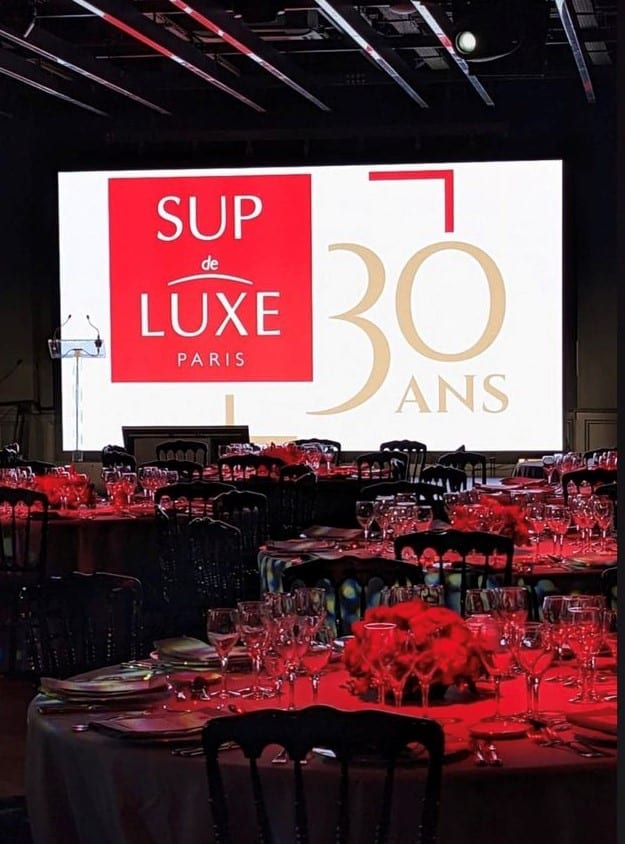[vc_row njt-role=”people-in-the-roles” njt-role-user-roles=”administrator,editor,author,armember”][vc_column][vc_column_text]
The luxury group Kering announced on Friday a new course in sustainable development, a goal of reducing its absolute greenhouse gas emissions by 40% by 2035.
Kering, France’s second largest luxury group behind LVMH, today announced its goal for 2035 to reduce its greenhouse gas emissions by 40% compared to 2021.
In 2021, the group’s greenhouse gas emissions were approximately 2.4 million tons of CO2. Kering is therefore targeting a total of 1.4 million tons of emissions by 2035.
This new target covers scopes 1, 2 and 3 of the Greenhouse Gas Protocol (GHG Protocol) (international accounting standard). Scope 1 represents the company’s direct emissions, scope 2 the emissions linked to the production of the energy it uses and scope 3 the indirect emissions.
“I am firmly convinced that the next step in building truly sustainable companies is to reduce our impact in absolute terms while creating value”, said Kering CEO François-Henri Pinault in a statement.
Three areas of progress
According to Marie-Claire Daveu, the group’s director of sustainable development, Kering will have to act on three pillars to achieve this goal, with tools already in place or to be invented.
The first pillar consists of “producing what we sell”, and therefore having a better forecast of needs with, for example, the use of artificial intelligence. Regarding the possibility for the group’s fashion brands (Gucci, Saint Laurent, Balenciaga…) to reduce their number of annual collections, Marie-Claire Daveu refers to the autonomy of the houses.
“This objective of results at the level of the group is declined at the level of each of the houses and the house has its own action plan to obtain this objective”, she said without further precision.
The second pillar concerns the improvement of manufacturing processes and the origin of raw materials. Finally, the third pillar concerns new development models such as second hand and the reuse of objects from old collections to make new ones.
By 2021, Kering will have achieved its goal of reducing its intensity emissions by 40%, four years ahead of schedule. Intensity emissions, unlike absolute emissions, remain correlated to the group’s growth.
In 2022, Kering’s revenues are expected to increase by 15% to €20.4 billion.
Read also >Kering decelerated in the last quarter of 2022
Featured photo : © Kering[/vc_column_text][/vc_column][/vc_row][vc_row njt-role=”not-logged-in”][vc_column][vc_column_text]
The luxury group Kering announced on Friday a new course in sustainable development, a goal of reducing its absolute greenhouse gas emissions by 40% by 2035.
Kering, France’s second largest luxury group behind LVMH, today announced its goal for 2035 to reduce its greenhouse gas emissions by 40% compared to 2021.
In 2021, the group’s greenhouse gas emissions were approximately 2.4 million tons of CO2. Kering is therefore targeting a total of 1.4 million tons of emissions by 2035.
This new target covers scopes 1, 2 and 3 of the Greenhouse Gas Protocol (GHG Protocol) (international accounting standard). Scope 1 represents the company’s direct emissions, scope 2 the emissions linked to the production of the energy it uses and scope 3 the indirect emissions.
“I am firmly convinced that the next step in building truly sustainable companies is to reduce our impact in absolute terms while creating value”, said Kering CEO François-Henri Pinault in a statement.
Three areas of progress
According to Marie-Claire Daveu, the group’s director of sustainable development, Kering will have to act on three pillars to achieve this goal, with tools already in place or to be invented.
The first pillar consists of “producing what we sell”, and therefore having a better forecast of needs with, for example, the use of artificial intelligence. Regarding the possibility for the group’s fashion brands (Gucci, Saint Laurent, Balenciaga…) to reduce their number of annual collections, Marie-Claire Daveu refers to the autonomy of the houses.
[…][/vc_column_text][vc_cta h2=”This article is reserved for subscribers.” h2_font_container=”tag:h2|font_size:16|text_align:left” h2_use_theme_fonts=”yes” h4=”Subscribe now !” h4_font_container=”tag:h2|font_size:32|text_align:left|line_height:bas” h4_use_theme_fonts=”yes” txt_align=”center” color=”black” add_button=”right” btn_title=”I SUBSCRIBE !” btn_color=”danger” btn_size=”lg” btn_align=”center” use_custom_fonts_h2=”true” use_custom_fonts_h4=”true” btn_button_block=”true” btn_custom_onclick=”true” btn_link=”url:https%3A%2F%2Fluxus-plus.com%2Fen%2Fsubscriptions-and-newsletter-special-offer-valid-until-september-30-2020-2-2%2F”]Get unlimited access to all articles and live a new reading experience, preview contents, exclusive newsletters…
Already have an account ? Please log in.[/vc_cta][vc_column_text]Featured photo : © Kering[/vc_column_text][/vc_column][/vc_row][vc_row njt-role=”people-in-the-roles” njt-role-user-roles=”subscriber,customer”][vc_column][vc_column_text]
The luxury group Kering announced on Friday a new course in sustainable development, a goal of reducing its absolute greenhouse gas emissions by 40% by 2035.
Kering, France’s second largest luxury group behind LVMH, today announced its goal for 2035 to reduce its greenhouse gas emissions by 40% compared to 2021.
In 2021, the group’s greenhouse gas emissions were approximately 2.4 million tons of CO2. Kering is therefore targeting a total of 1.4 million tons of emissions by 2035.
This new target covers scopes 1, 2 and 3 of the Greenhouse Gas Protocol (GHG Protocol) (international accounting standard). Scope 1 represents the company’s direct emissions, scope 2 the emissions linked to the production of the energy it uses and scope 3 the indirect emissions.
“I am firmly convinced that the next step in building truly sustainable companies is to reduce our impact in absolute terms while creating value”, said Kering CEO François-Henri Pinault in a statement.
Three areas of progress
According to Marie-Claire Daveu, the group’s director of sustainable development, Kering will have to act on three pillars to achieve this goal, with tools already in place or to be invented.
The first pillar consists of “producing what we sell”, and therefore having a better forecast of needs with, for example, the use of artificial intelligence. Regarding the possibility for the group’s fashion brands (Gucci, Saint Laurent, Balenciaga…) to reduce their number of annual collections, Marie-Claire Daveu refers to the autonomy of the houses.
[…][/vc_column_text][vc_cta h2=”This article is reserved for subscribers.” h2_font_container=”tag:h2|font_size:16|text_align:left” h2_use_theme_fonts=”yes” h4=”Subscribe now !” h4_font_container=”tag:h2|font_size:32|text_align:left|line_height:bas” h4_use_theme_fonts=”yes” txt_align=”center” color=”black” add_button=”right” btn_title=”I SUBSCRIBE !” btn_color=”danger” btn_size=”lg” btn_align=”center” use_custom_fonts_h2=”true” use_custom_fonts_h4=”true” btn_button_block=”true” btn_custom_onclick=”true” btn_link=”url:https%3A%2F%2Fluxus-plus.com%2Fen%2Fsubscriptions-and-newsletter-special-offer-valid-until-september-30-2020-2-2%2F”]Get unlimited access to all articles and live a new reading experience, preview contents, exclusive newsletters…
Already have an account ? Please log in.[/vc_cta][vc_column_text]Featured photo : © Kering[/vc_column_text][/vc_column][/vc_row][vc_row njt-role=”people-in-the-roles” njt-role-user-roles=”subscriber,customer”][vc_column][vc_column_text]








